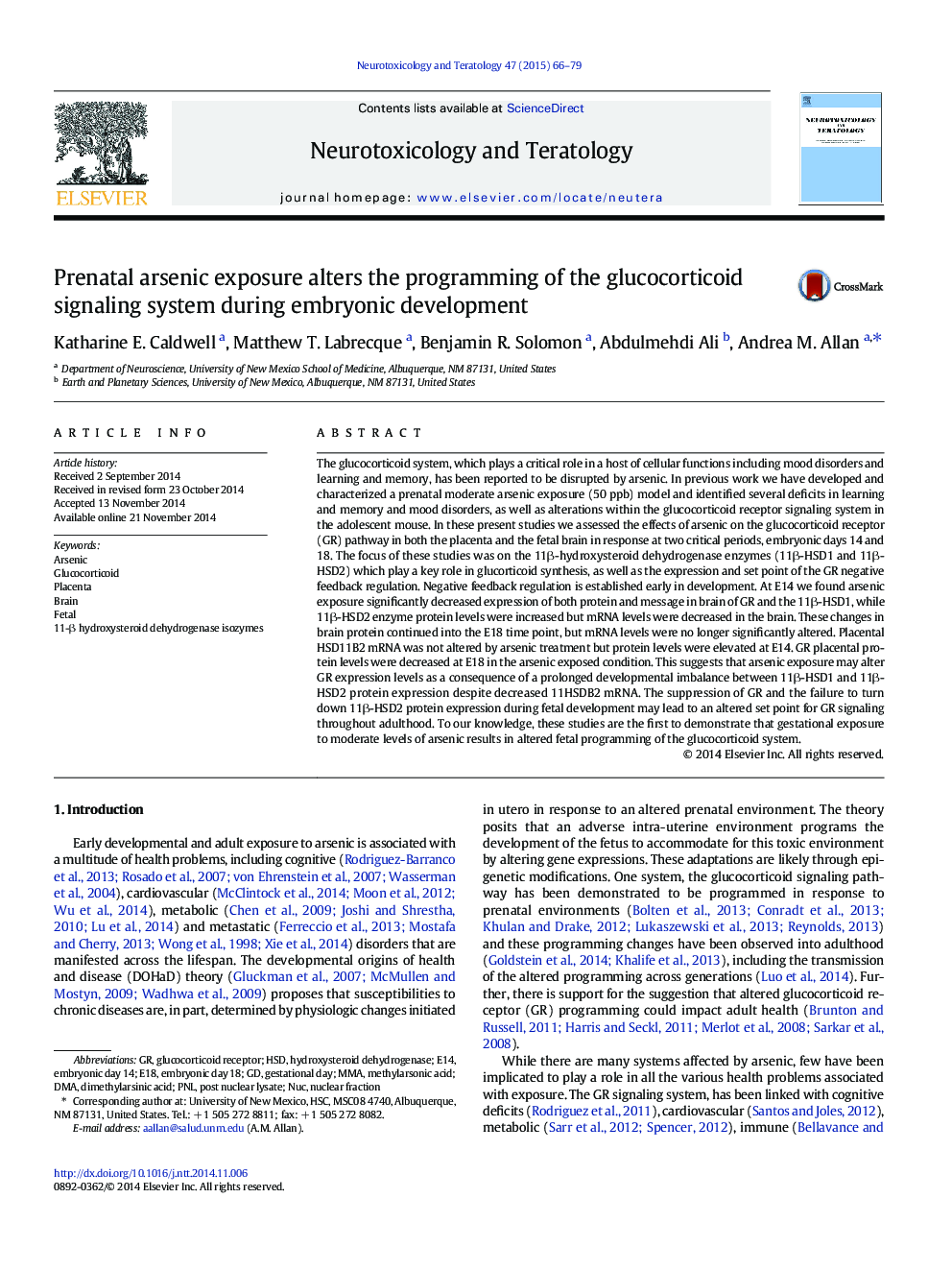| کد مقاله | کد نشریه | سال انتشار | مقاله انگلیسی | نسخه تمام متن |
|---|---|---|---|---|
| 5855626 | 1562088 | 2015 | 14 صفحه PDF | دانلود رایگان |
عنوان انگلیسی مقاله ISI
Prenatal arsenic exposure alters the programming of the glucocorticoid signaling system during embryonic development
ترجمه فارسی عنوان
قرار گرفتن در معرض آرسنیک قبل از زایمان، برنامه ریزی سیستم سیگنالینگ گلوکوکورتیکوئیدی را در طول رشد جنین تغییر می دهد
دانلود مقاله + سفارش ترجمه
دانلود مقاله ISI انگلیسی
رایگان برای ایرانیان
کلمات کلیدی
DMAE14PNLE18methylarsonic acidMMAHSDArsenic - آرسنیکdimethylarsinic acid - اسید دی متیلارسینیکPlacenta - جفت fetal - جنینEmbryonic day 18 - جنین روز 18gestational day - روز بارداریBrain - مغزhydroxysteroid dehydrogenase - هیدروکسیستروئید دهیدروژنازnuc - گردوGlucocorticoid - گلوکوکورتیکوئیدهاglucocorticoid receptor - گیرنده گلوکوکورتیکوئید
موضوعات مرتبط
علوم زیستی و بیوفناوری
علوم محیط زیست
بهداشت، سم شناسی و جهش زایی
چکیده انگلیسی
The glucocorticoid system, which plays a critical role in a host of cellular functions including mood disorders and learning and memory, has been reported to be disrupted by arsenic. In previous work we have developed and characterized a prenatal moderate arsenic exposure (50 ppb) model and identified several deficits in learning and memory and mood disorders, as well as alterations within the glucocorticoid receptor signaling system in the adolescent mouse. In these present studies we assessed the effects of arsenic on the glucocorticoid receptor (GR) pathway in both the placenta and the fetal brain in response at two critical periods, embryonic days 14 and 18. The focus of these studies was on the 11β-hydroxysteroid dehydrogenase enzymes (11β-HSD1 and 11β-HSD2) which play a key role in glucorticoid synthesis, as well as the expression and set point of the GR negative feedback regulation. Negative feedback regulation is established early in development. At E14 we found arsenic exposure significantly decreased expression of both protein and message in brain of GR and the 11β-HSD1, while 11β-HSD2 enzyme protein levels were increased but mRNA levels were decreased in the brain. These changes in brain protein continued into the E18 time point, but mRNA levels were no longer significantly altered. Placental HSD11B2 mRNA was not altered by arsenic treatment but protein levels were elevated at E14. GR placental protein levels were decreased at E18 in the arsenic exposed condition. This suggests that arsenic exposure may alter GR expression levels as a consequence of a prolonged developmental imbalance between 11β-HSD1 and 11β-HSD2 protein expression despite decreased 11HSDB2 mRNA. The suppression of GR and the failure to turn down 11β-HSD2 protein expression during fetal development may lead to an altered set point for GR signaling throughout adulthood. To our knowledge, these studies are the first to demonstrate that gestational exposure to moderate levels of arsenic results in altered fetal programming of the glucocorticoid system.
ناشر
Database: Elsevier - ScienceDirect (ساینس دایرکت)
Journal: Neurotoxicology and Teratology - Volume 47, JanuaryâFebruary 2015, Pages 66-79
Journal: Neurotoxicology and Teratology - Volume 47, JanuaryâFebruary 2015, Pages 66-79
نویسندگان
Katharine E. Caldwell, Matthew T. Labrecque, Benjamin R. Solomon, Abdulmehdi Ali, Andrea M. Allan,
